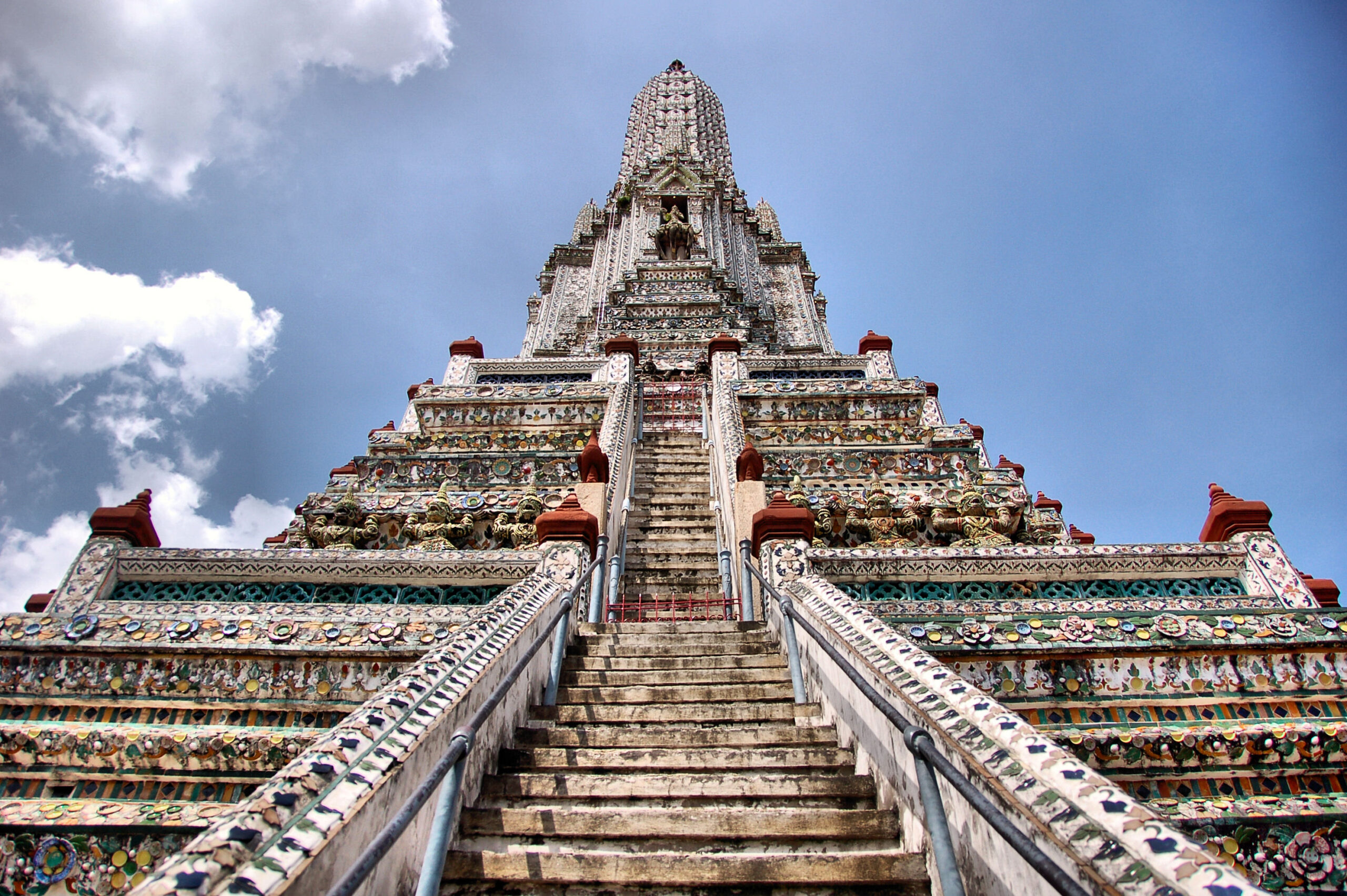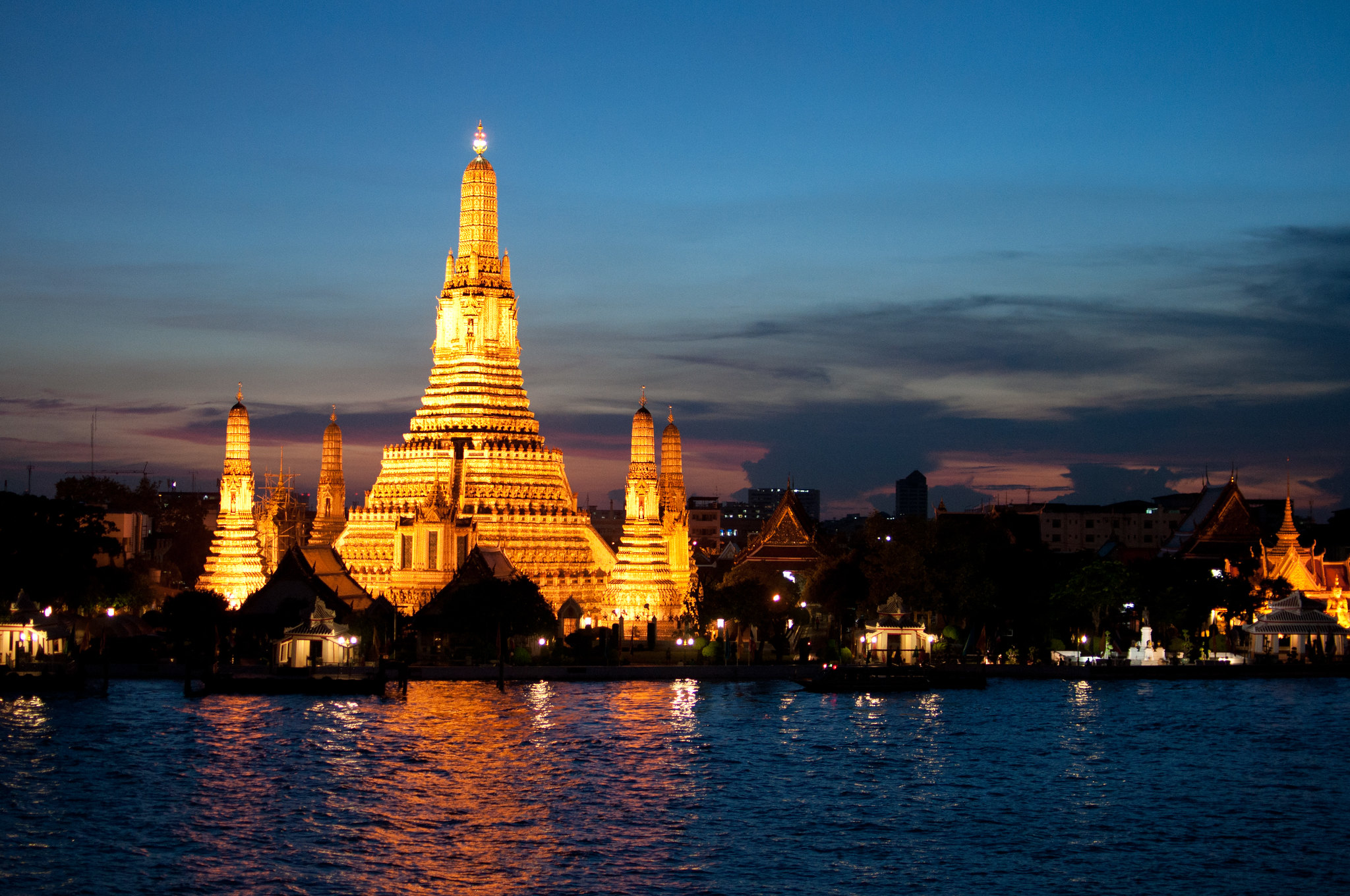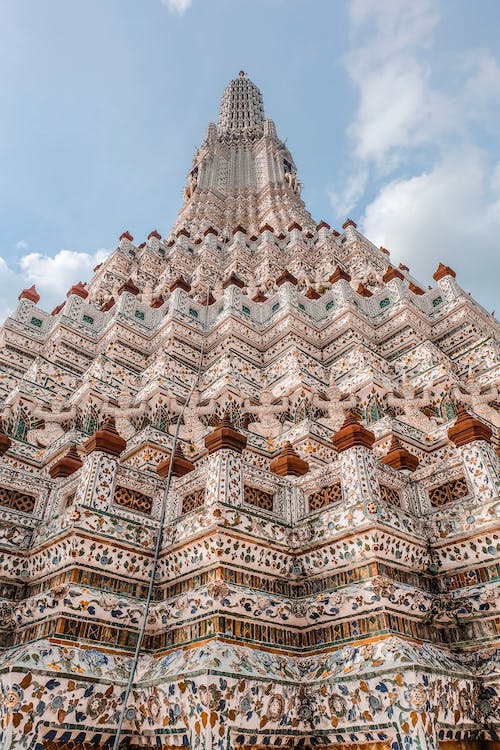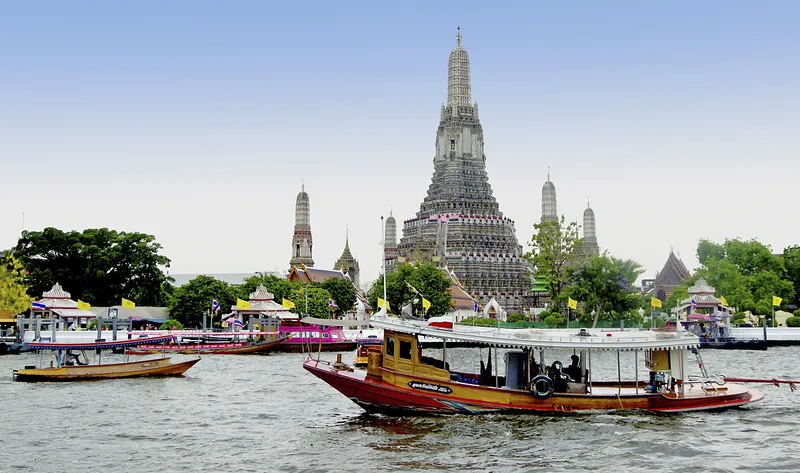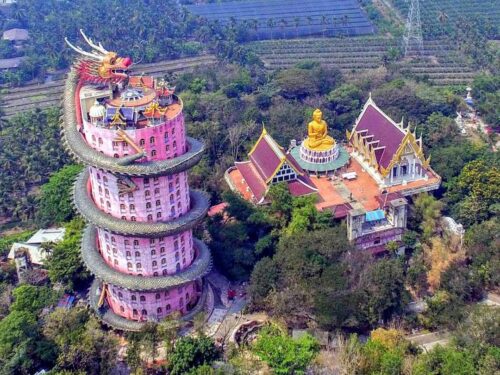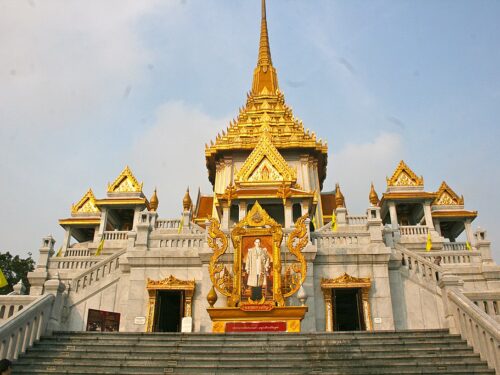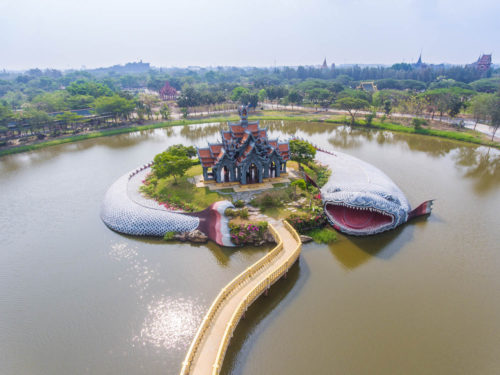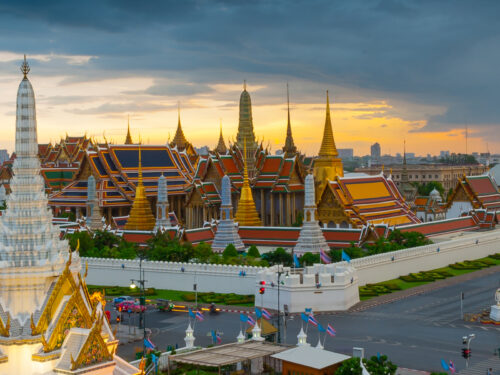Wat Arun Temple
One of Bangkok’s most recognizable landmarks, Wat Arun, is a perfect destination for visitors, especially who come here to look for stunning pictures to upload on their social media.
Wat Arun is the missile-shaped temple that rises from the Chao Phraya River’s west banks. It took after the name of the Indian god of dawn, Arun. Therefore, Wat Arun is also known as the Temple of Dawn.
Architecture of Wat Arun
Wat Arun is a Khmer-style temple with four prangs (which translates to ‘spire’) and one larger one in the middle.
According to Khmer, Hindu, and Buddhist cosmology, this concept represents the five sacred mountains that were home to the gods. The prang in the center represents Mount Meru which is believed to be the center of all the physical, metaphysical, and spiritual universes. The four other surrounding smaller prangs represent each housing image of the four guardian gods.
With a height of around 82 m (270 feet), the central prang of the Wat Arun Temple is the highest in Bangkok. There are three levels to the main prang, all connected by a staircase decorated with ornaments. Visitors can climb part way up the central prang to a platform and enjoy magnificent views there.
All five prangs are covered in porcelain mosaics and bits of seashells, giving the temple a gleaming iridescence when the rising sun’s light reaches it. Up close, you’ll see that the tiles are decorated with delicate floral patterns of many different colors. Inside the ordination hall, you’ll find certain murals depicting scenes from the life of the royals.
Considering the temple’s unique architectural design, it’s not a surprise that it’s seen as one of the most exquisite temples in Thailand.
History of Wat Arun
The story of Wat Arun dated back to the 1760s when the local general Taskin (who later is King Taskin) come across this site. At the time, the Ayutthaya Kingdom fell to invading Burmese and Chinese armies.
Taskin reunified the Siamese people and pushed the Burmese back. According to legend, Taksin came to the Chao Phraya River at dawn and saw a ravished temple. That small temple was Wat Makok which after became the famous Wat Arun. Stunning by its beauty, Taskin swore to rebuild it when the war was over.
In around 1767-1768, King Taskin fulfilled his oath and made the site his palace temple, renamed it Wat Chaeng. The temple was then chosen to preserve the Emerald Buddha, the sacred palladium of Thailand.
However, it was during the reign of Rama II (1809-1824) that the current appearance of the temple began to take shape. He renamed Wat Chaeng to Wat Arun and made a plan to raise the central spire higher and redesigned the temple’s aesthetic. Construction began under Rama II and was completed by Rama III around 1847, becoming the temple that we see nowadays. Its beauty and uniqueness make Wat Arun one of the most iconic structures in Thailand.
How to get there
Visitors can go to Wat Arun by taking ferry rides from the Tha Thien Pier, which is the closest pier from the Grand Palace.
The boat operates every 10 to 15 minutes, daily from 6:00 AM – 8:10 PM. The fee is 4 Bath per person.
Dresscode
Because Wat Arun is a Buddhist temple, visitors must wear culturally appropriate clothing to visit.
This means that visitors should wear long pants/dresses that at least cover the knee. Your shirts should also cover the shoulders. Tank tops or sleeveless shirts are not acceptable. Women must wear skirts or pants extending at least to the knee and not wear a top that reveals bare shoulders.
If you accidentally wear inappropriate clothes to Wat Arun, you can rent a sarong from the shop at the entrance for 20 Bath (and a 100 Bath refundable deposit).
Before entering some parts of the temple, shoes will also need to be removed. So we recommend wearing simple and easy-to-take-off shoes.
Tickets and other practicalities
The entrance ticket cost 50 Bath for each person.
Wat Arun is open daily from 8 AM to 6 PM.
Visitors are allowed to take photographs in any area of the complex.
The steps leading up to the center prangs at Wat Arun are pretty steep. Visitors should take caution when ascending and descending.
You may also like:
Read this in french version:
